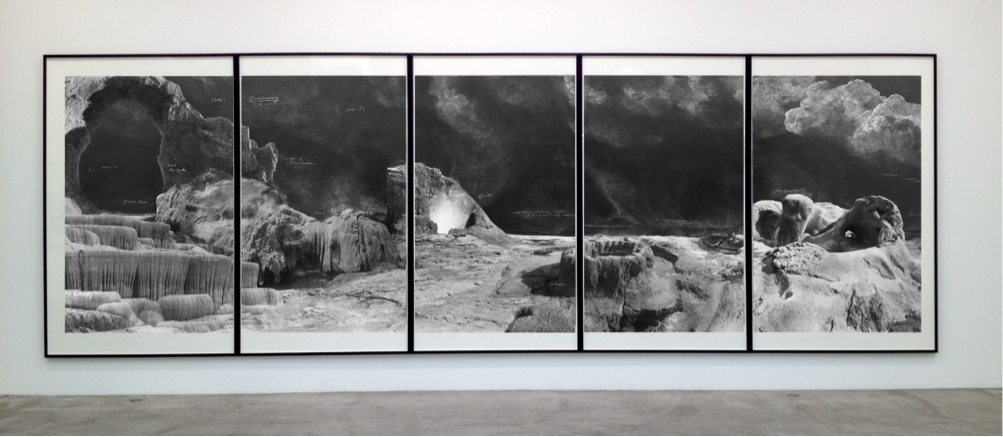
Quatemary
The British artist Tacita Dean (b. 1965) doesn’t need any introduction. Active since the 1990s Dean is best known for her work in 16mm film (think Disappearance at Sea from 1996, Fernsehturm from 2001 or Palast from 2004), although she uses a variety of media including drawing, photography and sound. Her films often make use of long takes and steady camera angles to conceive a contemplative atmosphere. A key element in her visual narratives is the unknown.
Anonymous and found sources form the foundation of much of her practice, characterized by methods of gathering material. Archives of memories, narratives, close and distant acquaintances, objects, landscapes and exceptional events are planted in the works as seeds for a new story that goes beyond the images into the viewer’s personal sphere. Often combined with text, the work resembles in the end a script for its own performance. The result is that her pictures are a strange mixture of the fantastic and the documentary.
Quatemary (2014) is the perfect illustration of this mixture. The 6.5-metre-long work builds on her previous photogravure works in which she has been developing techniques beyond traditional printmaking. Over the years, they have become a major part of her oeuvre. With Quatemary, Dean is fusing her use of found imagery with actual blackboard drawing to create an epic narrative within a single pictorial frame.
The work depicts a geological formation resembling a post-nuclear wasteland. Her inspiration was the memory of a documentary on the Yellowstone supervolcano[1]. With the help of old photographs from the nineteenth century she samples a scenery that looks like a place that was here before our existence and will probably remain when we are long gone. But at the same time we can notice words that root us in the present, you can detect the name of the British sculptor Henry Moore.
[1] ”The Yellowstone supervolcano is a blister of a volcano, which has no release. Magma has been gathering beneath the Park’s crust for millennia with no means to break through. The surface is noticeably rising and noticeably steaming. Soon, the programme said, the pressure would become so great that the ground would be wrenched apart causing an explosion of such epic magnitude that several states of America would be as good as wiped out instantaneously, and that it would cause the rest of the world to be covered with an ash cloud, so dense that it would block out the sun and cause an ice age. The human species would become extinct.”
